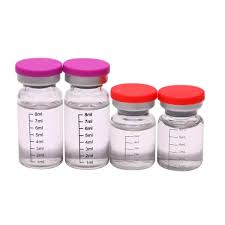
- +86-13363869198
- weimiaohb@126.com

Nov . 24, 2024 21:31 Back to list
Exploring Active Pharmaceutical Ingredients and Their Key Intermediates in Drug Development
Understanding Active Pharmaceutical Ingredients and Intermediates
Active Pharmaceutical Ingredients (APIs) and their intermediates play a crucial role in the pharmaceutical industry, forming the backbone of drug development and production. APIs are the biologically active components in medications that produce the intended therapeutic effects, while intermediates are the substances formed during the synthesis of these APIs. Understanding their functions, manufacturing processes, and regulatory requirements is essential for anyone involved in pharmaceutical development, production, or quality assurance.
The Importance of APIs
APIs are the essential elements that determine the potency and efficacy of a medication. Each API is a compound that directly influences the therapeutic outcome of a drug, whether it is a pain reliever, antibiotic, or cancer treatment. The selection of the correct API is critical for ensuring that a drug is effective and safe for patients. The development of an API requires a deep understanding of medicinal chemistry, pharmacology, and the mechanisms of action.
APIs can be derived from various sources, including natural extracts, synthetic processes, and biotechnological approaches. Natural APIs often stem from plants, animals, or microorganisms, while synthetic APIs are manufactured through chemical reactions. The development of biopharmaceuticals involves using living organisms to produce complex molecules, including monoclonal antibodies and recombinant proteins.
Intermediates in API Synthesis
The synthesis of an API typically involves several intermediate substances—compounds that are formed during the chemical transformation processes as researchers create the final API product. These intermediates are critical in the drug formulation process. They often arise from specific chemical reactions, and their formation must be carefully controlled to yield a high-purity final product. Reducing impurities in intermediates is essential, as they can impact the quality, safety, and efficacy of the final API.
The production of intermediates can also present challenges in terms of scalability, reproducibility, and regulatory compliance. Manufacturers must ensure that they adhere to Good Manufacturing Practices (GMP) throughout the entire synthesis process. GMP guidelines are crucial for maintaining quality and preventing contamination or variability that could affect drug efficacy and safety.
active pharmaceutical ingredients and intermediates

Regulatory Considerations
The development and manufacturing of APIs and intermediates are heavily regulated by government agencies, such as the U.S. Food and Drug Administration (FDA) and the European Medicines Agency (EMA). These agencies establish stringent guidelines to ensure that pharmaceutical products are safe, effective, and manufactured consistently.
Developers must submit detailed documentation regarding the synthesis of APIs, including information about the chemical processes, equipment used, and controls in place to ensure quality. The regulatory frameworks ensure that the risks associated with pharmaceutical manufacturing are minimized and support the global demand for high-quality medications.
Future Trends in API Development
As the pharmaceutical industry continues to evolve, several trends influence the development of APIs and their intermediates. Innovations in drug delivery systems, personalized medicine, and the increasing use of biologics are leading to the creation of more complex APIs. Additionally, advances in synthetic chemistry and bioprocessing techniques are enhancing our ability to produce APIs more efficiently and sustainably.
The integration of artificial intelligence (AI) and machine learning into drug development is also transforming how APIs are discovered and manufactured. These technologies can optimize chemical reactions, predict potential outcomes, and streamline the research and development process, thus accelerating the time it takes to bring a new drug to market.
Conclusion
Active Pharmaceutical Ingredients and their intermediates are vital components of modern medicine. Understanding their significance, the complexities of their synthesis, and the regulatory requirements governing their production is essential for anyone involved in the pharmaceutical field. As the industry embraces technological advancements and continues to evolve, the development of APIs will remain at the forefront of pharmaceutical innovation, ultimately leading to safer, more effective treatments for patients worldwide.
-
High Quality SGT-163 CAS 1099-87-2 Supplier & Factory Reliable SGT-163 Manufacturer
NewsJun.10,2025
-
High Quality 3-Chloropyridine CAS 626-60-8 - Reliable Factories & Suppliers
NewsJun.10,2025
-
CAS 157115-85-0 Bulk Suppliers - High Purity & Low Prices
NewsJun.10,2025
-
High Purity PMK Ethyl Glycidate Manufacturer 99% Quality Supply
NewsJun.10,2025
-
Pure CAS 57-85-2 Testosterone Propionate Pharma Grade Supplier
NewsJun.09,2025
-
Premium Tadalafil CAS 171596-29-5 Suppliers & Factories
NewsJun.09,2025